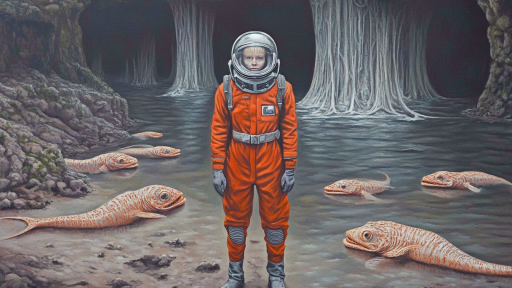
The human body is a marvel of nature, full of genetic quirks and rare anomalies that set some individuals apart in astonishing ways. From unexpected abilities hidden in DNA to mysterious traits that defy explanation, some people possess features that seem almost superhuman. Whether these traits are the result of ancient evolution, rare mutations, or something science has yet to fully understand, they challenge our perception of what it means to be human. Could these unique characteristics be remnants of an unknown past—or glimpses of human evolution in progress?
Golden Blood: The Rarest Blood Type

There is a blood type so rare that fewer than fifty people in the world are known to have it. Called “golden blood,” this Rh-null blood lacks all Rh antigens, making it a universal donor for certain rare cases. While it’s a medical marvel, those who possess it often struggle to find compatible donors if they ever need a transfusion. This genetic rarity has puzzled scientists for decades, raising questions about its origins and survival in human populations.
The Ability to See More Colors Than Most

Some individuals, known as tetrachromats, possess an extra type of cone cell in their eyes, allowing them to see millions more colors than the average person. While most people perceive the world through three color receptors (red, green, and blue), tetrachromats have four, unlocking an entirely different spectrum of hues. This trait is thought to be more common in women and is often undetected unless tested. For those who have it, the world is a richer, more vibrant place filled with colors others will never experience.
Unbreakable Bones

A handful of people have a mutation in the LRP5 gene that makes their bones significantly denser and nearly unbreakable. Unlike conditions that weaken bones, this rare trait creates an almost superhuman resistance to fractures. While having unbreakable bones may sound like a blessing, it can cause complications, including difficulty with buoyancy in water. Scientists study this mutation in hopes of uncovering treatments for osteoporosis and bone degeneration.
A Double Row of Eyelashes

Some individuals are born with a rare condition called distichiasis, which causes a second row of eyelashes to grow along the eyelid. While it can create a dramatic and striking look, these extra lashes can sometimes cause discomfort by irritating the eye. This trait was famously possessed by actress Elizabeth Taylor, whose mesmerizing gaze captivated audiences. Whether a beauty advantage or a medical anomaly, distichiasis is one of nature’s unexpected genetic surprises.
The Ability to Control Body Temperature

There are individuals who can consciously control their body temperature, defying what science deems normal. Practitioners of certain meditative techniques, like Tummo breathing, can raise their internal temperature even in freezing environments. Studies on Tibetan monks have shown that they can dry soaked sheets placed on their bodies using only their body heat. This ability suggests that humans might have untapped biological potential that remains largely unexplored.
Elf Ears: The Darwin’s Tubercle Trait

Some people are born with a small, pointed protrusion on the upper ear called Darwin’s tubercle, believed to be a remnant of an ancestral trait. While its purpose remains a mystery, some scientists think it might have helped early humans detect directional sound. Today, it is a rare and purely cosmetic trait that gives some individuals a subtly elfin appearance. Could this be an evolutionary leftover—or a glimpse into an ancient lineage?
The Super Taster Gene

Certain people have an extreme sensitivity to bitter and sweet flavors due to a genetic trait known as supertasting. With more taste buds than average, these individuals experience food more intensely, making them highly sensitive to strong flavors like coffee, alcohol, and spicy foods. While it may help avoid toxic or spoiled food, supertasters often dislike certain vegetables due to their heightened perception of bitterness. This heightened sense of taste is proof that even something as simple as eating is shaped by genetics.
The Ability to Sleep Almost Never

A rare condition called Fatal Familial Insomnia (FFI) prevents people from sleeping, often for months at a time. While most sufferers eventually develop serious health issues, a few individuals with an unknown variation of the condition seem to function normally on very little sleep. Some scientists speculate these cases may hold the secret to unlocking natural ways to reduce human dependency on sleep. Could there be people among us with a biological advantage that allows them to bypass one of life’s most essential functions?
Cold Resistance Like No Other

Some individuals, such as the famous “Iceman” Wim Hof, exhibit a remarkable ability to withstand extreme cold. Unlike the average person, their bodies do not react as expected, allowing them to survive freezing temperatures without suffering from hypothermia. This ability is linked to specific breathing techniques and potential genetic factors that influence the body’s response to cold. Could this be an evolutionary adaptation that only a few have retained?
Extremely Flexible Joints

Hypermobile individuals have joints that extend far beyond normal ranges due to a genetic variation affecting connective tissues. While some use this ability for impressive feats in gymnastics and dance, others suffer from chronic joint pain and instability. The condition, often linked to Ehlers-Danlos syndrome, is both a gift and a challenge for those who possess it. It’s a reminder that human genetics can create both extraordinary abilities and unexpected difficulties.
The Werewolf Syndrome

Hypertrichosis, also called “Werewolf Syndrome,” causes excessive hair growth all over the body due to a genetic mutation. Throughout history, those with this condition were often mistaken for mythical creatures or put on display in traveling circuses. While modern science has debunked myths surrounding it, the cause of this rare condition remains only partially understood. It serves as a living example of how genetic anomalies can blur the line between legend and reality.
Eyes That Glow in the Dark

A rare condition called “Night Shine” occurs when certain people’s eyes reflect light in low-lit conditions, much like those of cats. This eerie glow is due to a mutation that affects how light is absorbed and reflected in the eye. While rare in humans, it suggests that some individuals might have inherited a trait from our distant evolutionary past. If humans had evolved as nocturnal hunters, could this have been a common trait long ago?
Born With Extra Fingers or Toes

Polydactyly is a rare condition where individuals are born with extra fingers or toes, sometimes fully functional. While many cultures historically viewed this trait as a sign of good luck or divine power, modern science sees it as a harmless genetic variation. Some people born with extra digits choose to keep them, finding them useful rather than a hindrance. This genetic quirk serves as a reminder that “normal” is simply a matter of perspective.
Evolution’s Unfinished Blueprint

The human body is a constantly evolving mystery, shaped by time, genetics, and environmental factors. Some of these rare traits may be remnants of ancient adaptations, while others could hint at the next stages of human evolution. As science continues to explore these anomalies, we may discover that these so-called rarities are simply glimpses of possibilities waiting to unfold. Perhaps the next great step in human evolution is already hidden within us, waiting to be uncovered.





